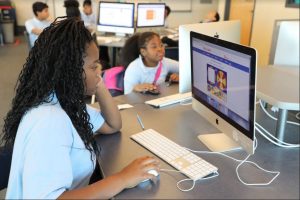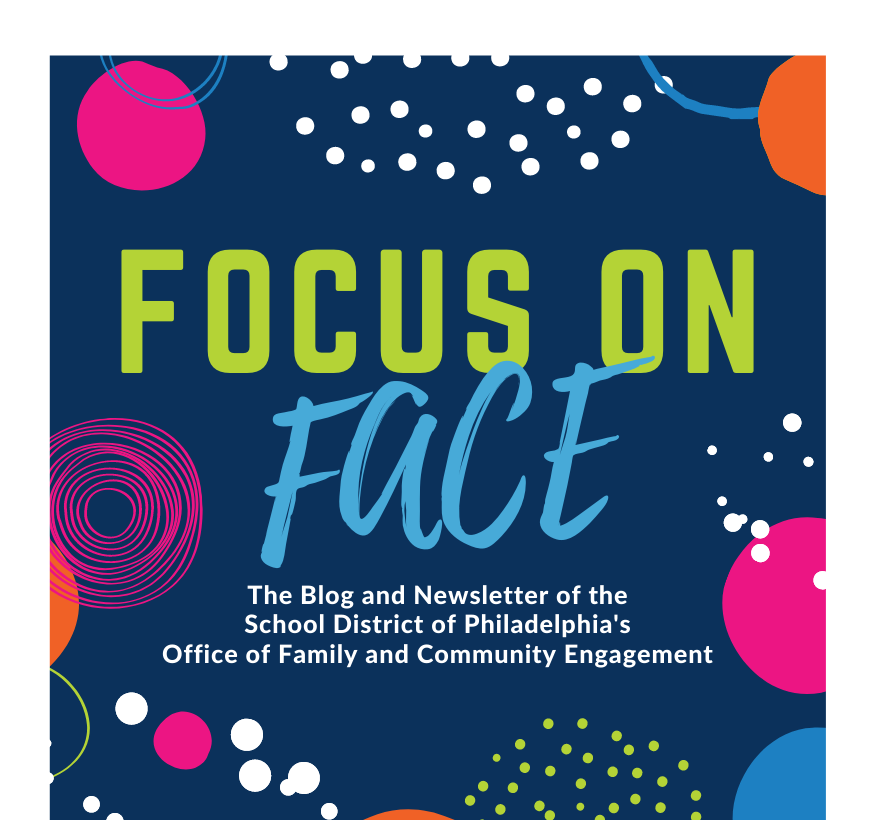Here at the FACE Office, we often hear feedback from families about how math curriculum and strategies to solve math problems seem to have changed throughout the years. The “new math” that their children learn can sometimes be hard to navigate and understand. To gain some insight and helpful tips, Focus on FACE sat down with two Math Curriculum Specialists, Emily McGee and Martha Schlatter in the Office of Curriculum, Instruction, and Assessment here at the School District of Philadelphia in order to untangle and unpack some of the myths behind this “new math” curriculum.

Both Emily and Martha agree that math curriculum has changed to a certain degree over the years. In the past, there was more of an emphasis on simply getting the correct answers; however, now there is more of an emphasis on thinking through different strategies to solve the problem. Rather than trying to get the answer as quickly as possible, now it is more important for children to know how to explain their thinking and the steps that it would take to produce a certain answer. Because of the focus on thinking more about what the problem is asking, a lot of the classroom focus centers around making sense of it using drawings, models, or manipulatives like color tiles or cubes to help visualize the math problems.
Now in math classrooms, teachers try not to prescribe set steps, tricks, or procedures that students must use. For example, as second-graders learn double-digit subtraction, in the past there may have been a focus on quickly teaching students the shortcuts for borrowing and subtracting. However, now, teachers are trying to help students understand what is happening in the problem and why that is happening. Emily shares that she thinks that switches have come about because even thinking about what math is has changed: “It’s not just about getting an answer but about communicating ideas and problem solving.” In the past, students were simply taught the algorithm for subtraction without learning the background knowledge about why we take from the tens in order to redistribute to the ones. Learning the background knowledge helps students do more than memorize one way to get the answer. Martha Schlatter shares that to attribute only one way of solving a problem can be very limiting to kids.
With the switchover of the math focus, you may ask the question: How can you help support your child in his/her math skills and studies? Martha advises that it is important and easier than you think to incorporate math into every day, real-life scenarios. Places like grocery stores are great locations to notice ways that children are naturally calculating and doing math; Martha even sees her son do math while playing his Pokémon game! Ask your child real-life questions, ask for help calculating how much your groceries cost or how many items they see on the shelves. Constant exposure to numbers and familiarity with creating patterns and counting in multiples helps students feel at ease with math. There are also math apps and games such as DragonBox (Pre-K to Algebra) that can help with math concepts.

There are also ways to help as soon as your child returns home from school. Ask your child what they learned in class today and ask specifically about the math strategies that they discussed. While doing math homework, allow students to ask questions about the content and to try to explain to you or think through what is happening within the question. Try to emphasize to your child that it is not about speed or how quickly you can find an answer, but about the process. In conjunction with these strategies, math is also largely about the mindset behind it. Martha says, “Stay curious and ask questions; being curious doesn’t mean that you’re dumb or unintelligent and it doesn’t mean that you don’t know or that you’re not ‘math-minded.’” It serves as a way to help your child believe that he can be a mathematician because part of being good at math is being able to ask good questions.
Encourage your child today that he can be a mathematician! There is not only one set way to do math, and many of these new strategies to solve problems have come from students themselves, creatively breaking questions apart. So let your child get creative with math, be free to ask questions, and find the strategies that work the best for them!

